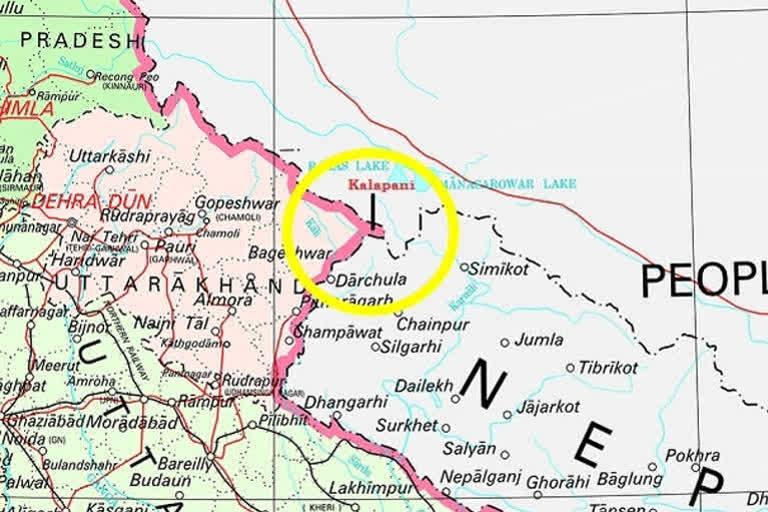Hyderabad: Ties with Nepal have hit a low in recent times. On June 12, firing by Nepal police near a border point in Bihar’s Sitamarhi district left an Indian dead and three others injured. On June 13, the Nepal parliament passed a resolution redrawing the country’s map by claiming areas of Uttarakhand (Kalapani, Limpiyadhura and Lipulekh) to be part of its territory. These border disputes disturbed the normal life of locals especially farmers on both sides of border in many districts.
People of the two countries have, for decades, shared a ‘roti-beti’ relationship, marrying into families on the other side and sharing a close bond that transcends the border demarcation. They also go to work on the other side of the border to earn a livelihood.
State-wise chronology on how border disputes affecting farmers in a various way in different districts:-
Uttarakhand & West Bengal Farmers
● First it was the economic impact of the COVID pandemic and now it’s the tensions with Nepal over its controversial territorial map. Approximately 100,000 pineapple farmers, mostly living in the Darjeeling and North Dinajpur districts of West Bengal, are staring at huge losses.
● The pineapple belt in North Bengal is spread over some 25,000 ha, and export of the fruit to Nepal in the June to August period alone is worth Rs 4 crore. But given the changing equation with Kathmandu, fruits, vegetables, salt and other supplies going by trucks from the Panitanki transit point in Darjeeling are not finding as friendly a reception in Nepalese markets as earlier.
Bengal’s farmers, though a tad disappointed initially. Before the pandemic and the recent controversies with Nepal, some 40,000 pineapples used to cross the border every day. With exports drying up, the fruits are either rotting in the fields or being sold locally at Rs 6-7 a piece. The same pineapples would earlier fetch Rs 40-50 a piece. Even though what farmers earned was much lower than the retail price, pineapple cultivation was always profitable. Not just Nepal, pineapples from Bengal have a huge demand in Delhi, Ludhiana, Jalandhar, Gurugram, Ghaziabad and other parts of Uttar Pradesh and Bihar.
● Apart from the pineapple growers, an estimated 20,000 farmers growing vegetables in the Panitanki, Naxalbari and Kharibari areas of Darjeeling district are struggling to find markets in Nepal.
● The lockdown already has impacted the movement of vehicles and increased transportation cost. The ongoing tension with Nepal has further had an adverse impact on cross-border trade.
Uttar Pradesh Farmers
● Increasing tension between India and Nepal owing to boundary dispute has left a group of farmers in Maharajganj district worried as they fear missing out cultivation on their agriculture land located in Karauta area in Rupandehi district of Nepal. Many farmers own agricultural plots in Rupendhi and other areas on Nepal’s side of the border, which is around 20 kilometres from Maharajganj. Alternately, farmers on the other side of the border, who are citizens of Nepal, also own land in Maharajganj and adjoining areas.
● The 700 km long international border is sealed since March 25 when the lockdown was announced to fight the COVID pandemic. There has been no movement of people from either side of the border since then and now security personals deployed on both sides are not permitting people to cross the border. The situation is no different in nearby villages such as Khairaghat, Batai Diha, Ekdangwa, Khurwa Khurd, Bagahi, Bargadwa, Jamuniha and Chapiya villages. The farmers, who own land in Nepal, are too desperate to cross the border to conduct business, which has been a usual affair for them in normal times.
Allegations on Bhutan that it stopped water after China, Pakistan and Nepal, now Bhutan has also started hassling India. Thimphu has stopped releasing channel water for irrigation along its border with India near Assam, affecting thousands of farmers in 25 villages of the region. Farmers in Guwahati staged a protest against the blocking of water which flows from a man-made irrigation channel ''Dong'' for growing paddy. The channel has been used by farmers of Bhutan and India in the region since 1953. The withholding of water by the Bhutanese government is affecting people of 25 villages.
Bihar Farmers
● Nepal and Bihar share an 800-km-long border, with 6,164-odd villages, across seven Bihar districts, located close to the Nepal border. People living in Bihar have land, shops and other assets in Nepal. Similarly, scores for villages exist on the Nepal side. But after firing incident by the Nepal police on the Indo-Nepal border in Bihar's Sitamarhi district, the situation changed drastically. Earlier people in Janaki Nagar and other villages in Sitamarhi, the territorial dispute holds no meaning. More than 500 families in this village alone have marriage relations in Nepal. People of such families have stopped visiting each other since the firing.
● Border dispute affecting farmer is not new, there is history since India-Pakistan border dispute started, for instance farmers of 220 villages in Tarn Taran, Amritsar, Gurdaspur, Pathankot, Ferozepur and Fazilka districts owned the land along the 553-km Punjab border. They lost 21,000 acres land to partition as these lands are situated beyond the barbed fence, installed some metres within the actual border, from Bamyal to Abohar.



